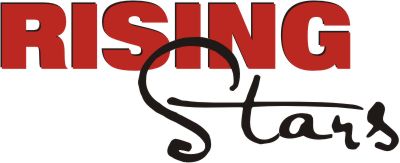
The Opposites
By Shaer Reaz
Illustration: E R Ronny
Insights into two of the most famous icons of the world today
Hello Kitty and Che Guevara. These two shouldn't have a lot in common, but you'd be surprised. First, there's the pink Hello Kitty AK47 assault rifle, a favourite weapon of rebels and revolutionaries (like Che) everywhere. Then there's the fact that these two are the biggest cultural icons of the 20th and 21st centuries.
Hello White, according to her creator Yuko Shimizu and the people at Sanrio (the company that licenses Hello Kitty), is a bright and kind hearted young girl (actually a female bob-tail cat) who likes art, music and English in school, is very close to her twin sister Mimmy, and likes homemade pies and collecting cute things. She also happens to adorn millions of bags, mugs, key chains, clothing, jewelry, tombstones and God knows what else.
Che Guevara was a revolutionary mastermind who led the Cuban socialist revolutionary movement, alongside Fidel Castro. He was universally applauded as a champion of justice, for putting the needs of humanity over capitalist greed and politics. A snapshot of him at a funeral service in 1960 (for the victims of a bomb blast in Havana), taken by Alberto Korda, would later become the most famous photograph from the 20th century.
A stylised version of “Guerrillero Heroico” by Jim Fitzpatrick would eventually become the most recognised image in recent times, gracing the walls of conflict ridden countries and the t-shirts of millions of rebellious teens.
While Hello Kitty was created for the sole purpose of merchandising and turning a sizeable profit (which it was VERY good at), it would slowly become a hate symbol for a group of feminists. According to them, Hello Kitty represented the exact brand of female itemisation that they're fighting, since Hello Kitty is branded as a female with no mouth on her face. They claim that this is a representation of females in society, where the female is not expected to speak or raise her voice. Faced with these accusations, Sanrio claims that Hello Kitty doesn't have a mouth because they wanted her fans to decide what character or voice Hello Kitty would have; which promptly sent the feminists into further bouts of rage, saying females were not something to be moulded into someone's desired object.
Whatever the stand feminists take on Hello Kitty, it's useless to deny the life shaping lessons the girl/cat brings with it. Like the Sesame Street puppets, Kitty was designed first and foremost as an educational tool for young Asian girls. Its sheer success guaranteed a smooth transition into Western culture, where a million other young girls took it up as personalisation tags. It was simple, it was effective. It was successful at what it was destined to be: an icon.
Majority of socialists will tell you that usage of Che's image as a capitalist profit earning tool is a blatant misuse of his ideals, but some, including Alberto Korda himself, reasoned that as long as the image was used in a non-immoral way, it would serve as a powerful tool for spreading the Marxist way of thinking.
Korda never received any royalties for his photograph, and never asked for one. True to his word, Korda filed a lawsuit against the alcohol producer Smirnoff for using Che's image in a commercial without his consent. Korda said he couldn't let Che's image be associated with a product that was detrimental to health and that the commercial had crossed a moral line. The $50,000 he received as part of the settlement was donated to the Cuban healthcare system.
Che's was such a powerful image that many consider it to be art. The set jaw, the steeled gaze a mixture of pain, anger and sadness, the beret, the beard and the scraggly hair, the sheer resolve of a hardened revolutionary, it was almost as if this single photograph channelled all the experiences of Che through to the viewer. Jonathan Green, of the California Museum of Photography, has speculated that, "Korda's image has worked its way into languages around the world. It has become an alpha-numeric symbol, a hieroglyph, an instant symbol. It mysteriously reappears whenever there's a conflict. There isn't anything else in history that serves in this way."(From Wikipedia)
Be it an illustration or a photograph, a truckload of passion CAN change the world. Look at what Obama did. He may not have done much in office, but the fact that he stormed into the White House as America's first black president speaks volumes about the power and passion that went into his campaign. Surprisingly enough, the image (penned by Shephard Fairey) that stuck through the campaign looked remarkably similar to Che, and was usually underpinned by words like “Hope”, “Change” and “Progress”. A single image brought a black president into the Oval Office.
Hello Kitty is a cute little girl (cat?) aimed at attracting small teen girls, while the stylised Che is the choice of millions of rebellious teens around the world. It is hard to think of any other icons that have had such a huge impact on the commercial world just through an image. Even with such opposing dynamics behind them, these icons have reshaped lives like never before: the power of creativity, the power in a photograph, all evidenced in these.
